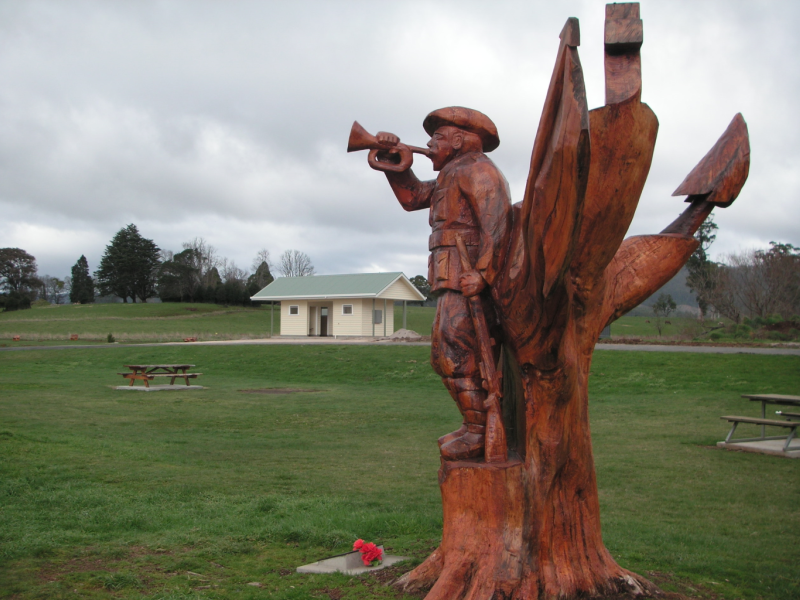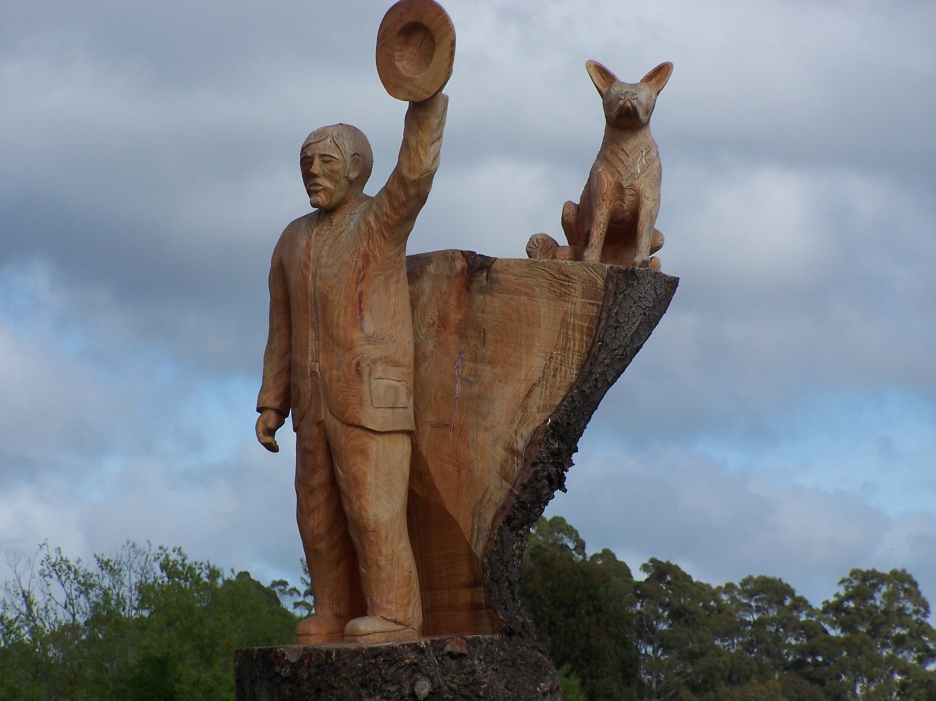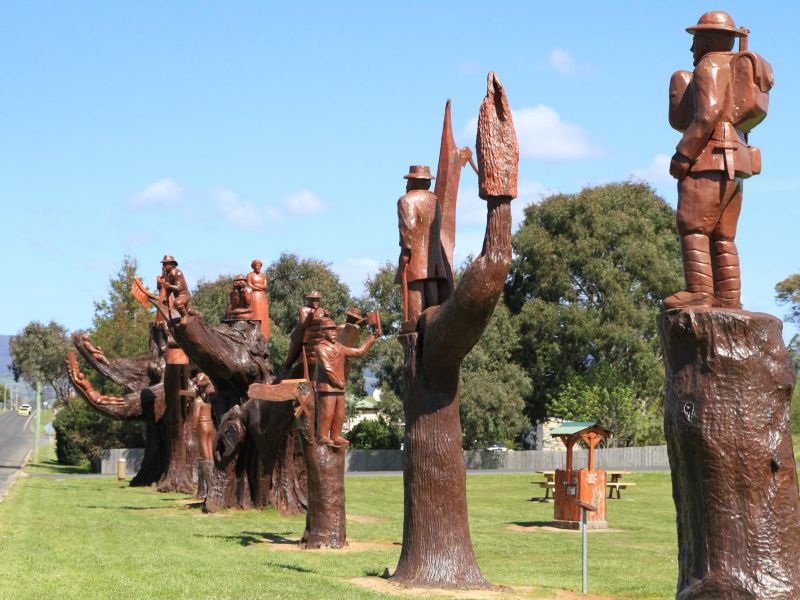From Seed to Sculpture: First World War remembered in Legerwood

Along the streets of Legerwood, a tiny town 1 hour’s drive from Launceston in Tasmania, are tree carvings that resemble the local men who lost their lives in the First World War. They are known as the Legerwood Memorial Carvings.
In 1918, the town didn’t yet have a name, but the local community had lost men to the turmoil of the First World War. A train line runs through the small hamlet and supported the local timber industry that most of the men who volunteered for service were part of. The family members of the seven locals who died were invited to a plant tree in memory of their loved one.
These trees grew for more than 80 years until it was decided that they would needed to be removed. The community, led by the Legerwood Hall and Reserves Committee, successfully rallied behind a plan to preserve the memory of the men by using the trees as canvases for sculptures. In 2004, chainsaw artist Eddie Freeman began crafting the memorial trees into what they are today. On Anzac Day in 2006, a ceremony was held with local servicemen and women and plaques were unveiled.

Legerwood Hall and Reserves Committee Secretary, Cindy Walsh, said the sculptures drew crowds from all over Australia and had become a place where people commemorated those who were lost in the First World War.
“Before they were turned into sculptures, only a few people in Legerwood knew the history of the trees,” she said.
“It was important to learn about the men who lost their lives, preserve and tell their story.”
The town also constructed a Memorial Park, a place where people can go to remember those who were lost in all conflicts.
“Memorial Park has become a centre for everyone to get together. It is a peaceful place where people can enjoy the sunshine and have a barbeque.”
The sculptures were inspired by the wood sculptures by artist John Brady, at Lake’s Entrance in Victoria which also commemorates those who served the First World War.
